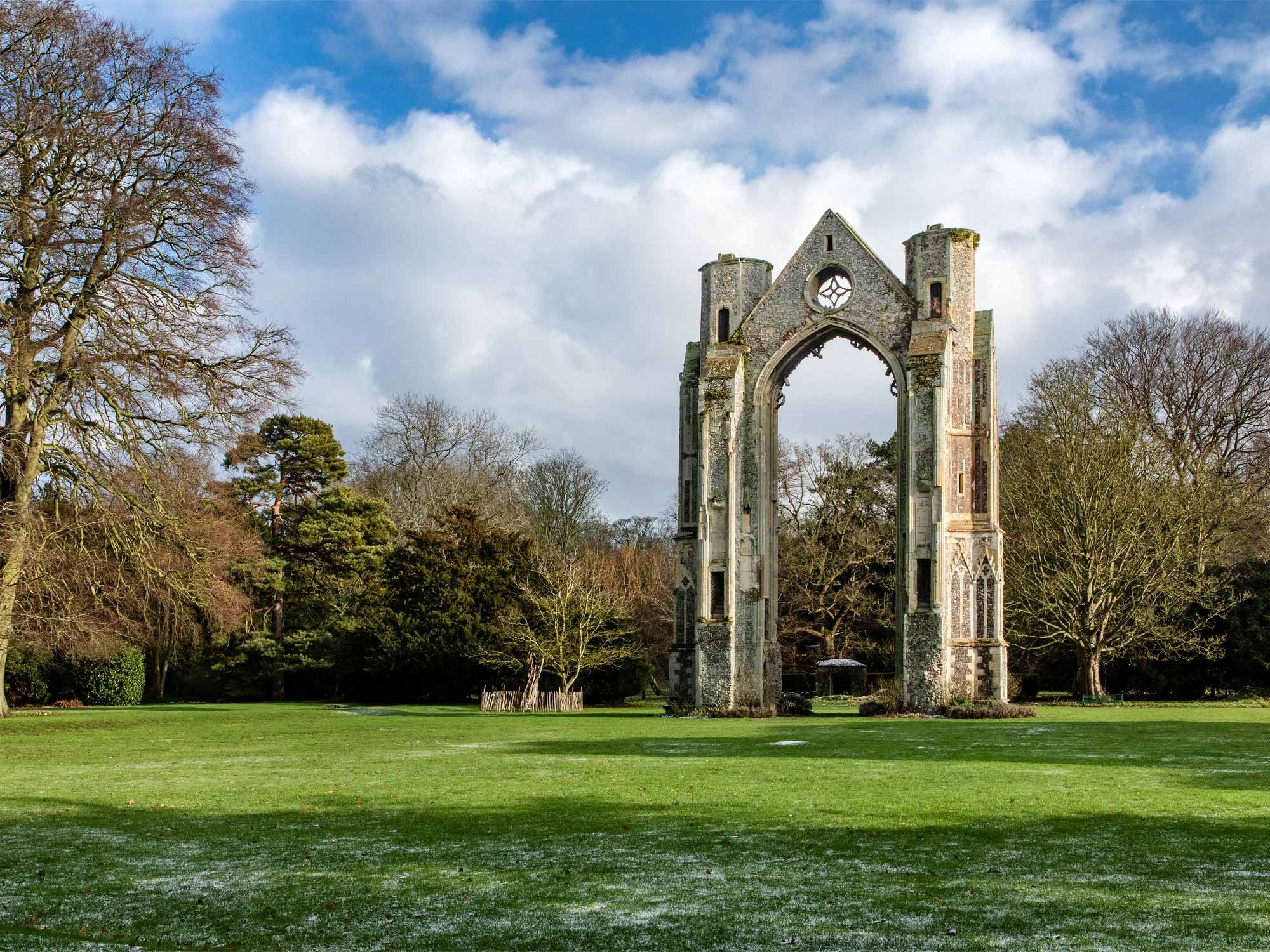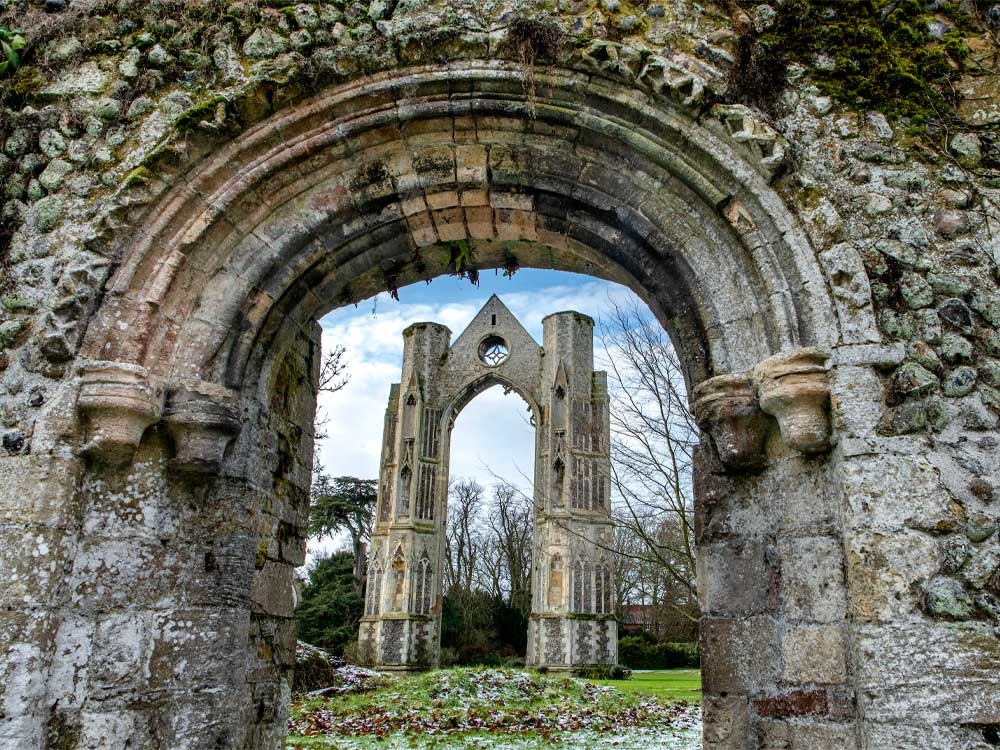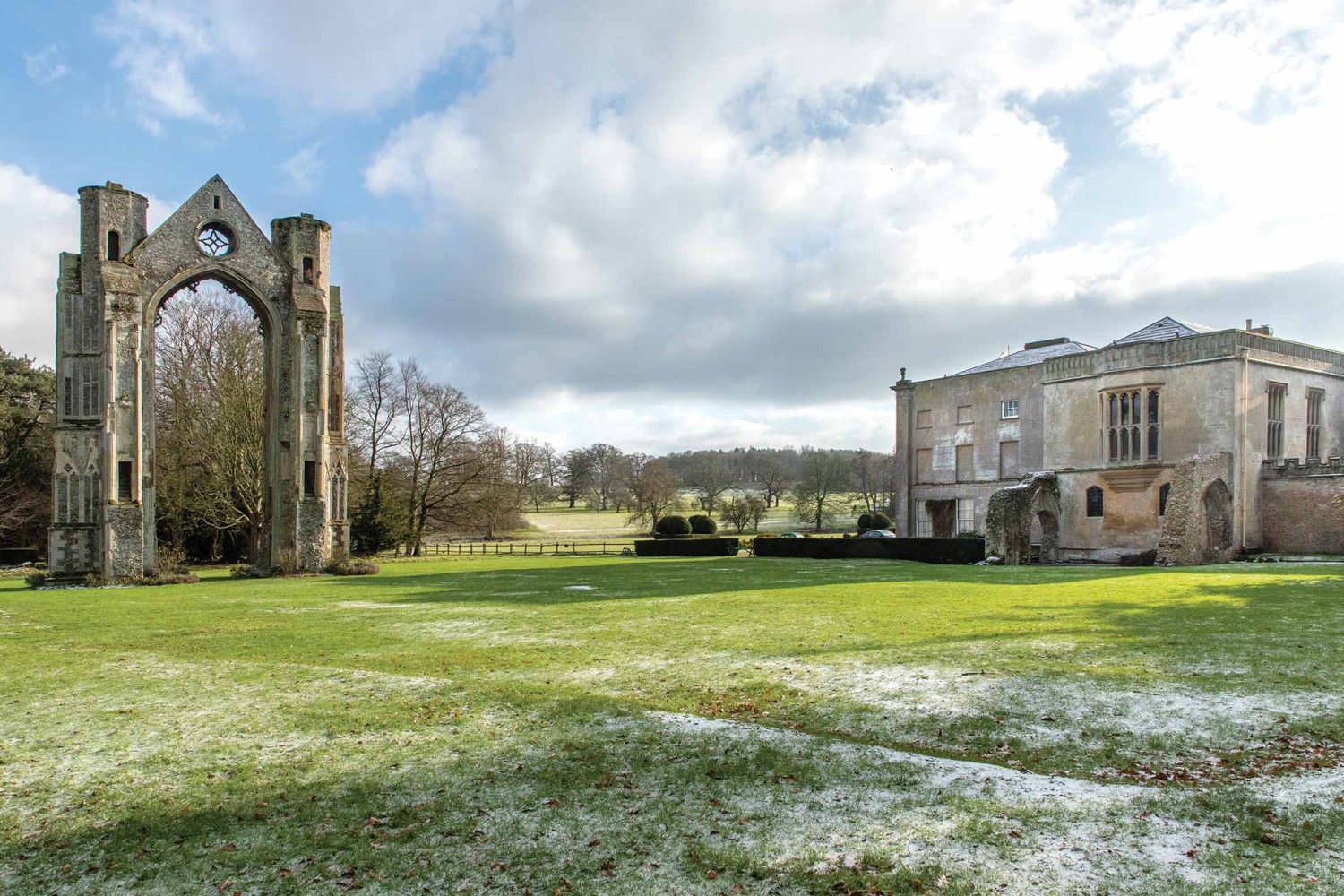
Walsingham Abbey
It was one of Norfolk’s most important religious sites and was once one of the most popular destinations for pilgrims in the whole of Europe – and today it remains a haven of peace and tranquility
Surrounded by the busier towns of Holt, Wells and Sheringham, there’s a welcome aura of tranquillity as you walk through the streets and lanes of Little Walsingham. At the gateway to the village, the spectacular ruins of the medieval Franciscan friary mark this as a place of some antiquity – and they’re but a short stroll from the splendid grounds of Walsingham Abbey.
Time has marked the history of this little village with a cohesive blending of architectural periods. The timbered Bull public house once formed part of the outer precinct of the abbey alongside the Shirehall Museum, tucked away in a corner of the cobbled Common Place – with the 15th century Porter’s Lodge and Gatehouse alongside it and a 16th-century pump house at its centre.
The remains of the abbey built in 1153 stand within tranquil grounds approached through the ancient Shirehall Museum, the former courthouse where during the 18th and 19th centuries the Quarter Sessions were held and the Petty Sessions until 1974.
Rivalry existed between the two religious houses. When the Augustinians of the priory held a market outside the priory gates in Common Place, King Edward III granted the Franciscan friars the right to hold their own market on Fridays – with each trying to outdo the other to attract merchants to buy from their stalls.
Both monasteries suffered huge acts of destruction after the Dissolution Act of 1538 and the priors and canons were pensioned off.
Within the grounds of the abbey are the remains of the Augustinian monastery over which a mansion was constructed in the 17th century. The privately-owned house was remodelled in the early 19th century and a sumptuous landscaped garden added. It was at this time that it became known as The Abbey.
Adjacent to the abbey grounds is the Shrine of our Lady, a modern chapel on the site of the Holy House discovered during excavations in 1961, which has attracted visitors to the town for centuries. A small wooden plaque now marks the spot where the Holy House once stood.
In medieval times, Walsingham rivalled Canterbury and some of the shrines of Europe as a place of religious pilgrimage, until with the dissolution of the monasteries these ceased until being revived in modern times.
Little remains of the original buildings, but one of the most striking of the retained features is the east window of the priory church – which gives an impression of the size of the church, at 244ft long. The refectory shows a decorated west window and stairs apparently leading up to the pulpit, whilst the crypt with its roughly concealed fireplace and vaulted ceiling is still visible.
During the summer, Walsingham Abbey again becomes a place of pilgrimage when services are held before a small altar set up under the east window of the priory church or on the site of the Holy House, marked by a small stone cross in the lawns.
Standing almost to its full height is the former west front of the priory with a glimpse through the fine Norman arch of the Well Garden and the healing wells that were moved to this position from the infirmary ruins. Beyond these, the picturesque Pack Horse Bridge (a 19th century interpretation of a medieval bridge) spans the fast-running River Stiffkey, and draws visitors to explore the 18-acre woodland site and parkland beyond.
A Walsingham legend surrounds a small wooden door in the boundary wall opposite the Anglian shrine. Known as Knight’s Gate it relates to a 1314 event when Sir Raaf Boutetout, in the process of fleeing from his enemies, prayed to Our Lady for deliverance – and upon passing through a wicket gate here, discovered sanctuary in the priory grounds.
Pilgrims have travelled the roads to Walsingham for centuries, but when the fields surrounding this historic village are covered in winter’s snow and frost, it’s to the grounds of the abbey, mirroring their virgin whiteness with a magnificent carpet of snowdrops and acolytes, that enthusiasts in their hundreds are drawn.
Notable for covering the acres of garden and woodland, the origin of the snowdrops is obscure, but like bluebells, these tiny flowers heralding the start of spring are recognised as growing in areas of former abbeys.
The snowdrop season is from late January to early March, although traditionally they’re said to come into flower at Candlemas - on February 2nd.


